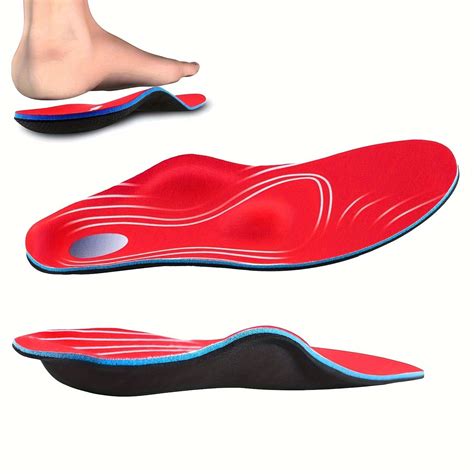Flat feet, also known as pes planus, is a common condition that affects millions of people worldwide. It occurs when the arches of the feet collapse, causing the feet to roll inward and the ankles to pronate. This misalignment can lead to various foot, ankle, and leg problems, including pain, stiffness, and instability.

Fortunately, arch support insoles can provide significant relief from flat feet symptoms. These insoles are designed to fill the gap in the arch area, providing support and cushioning to the foot. By doing this, arch support insoles help to realign the foot and ankle, reduce pain, and improve overall foot function.
Types of Arch Support Insoles
There are various types of arch support insoles available, each designed to meet specific needs. The most common types include:
Over-the-Counter Insoles:
These are readily available at most pharmacies and shoe stores. They provide a basic level of support and are a good starting point for those new to arch supports.
Custom-Molded Insoles:
These are made from a mold of your foot, ensuring a perfect fit. They offer the highest level of support and are ideal for individuals with severe flat feet or other foot deformities.
Orthotics:
These are prescribed by a medical professional and are typically made of more rigid materials. They are designed to correct specific foot problems, such as overpronation or supination.
Benefits of Arch Support Insoles for Flat Feet
Arch support insoles offer a wide range of benefits for individuals with flat feet, including:
Pain Relief:
Insoles help to reduce pain caused by flat feet by providing support and cushioning to the arches. They can also help to reduce foot fatigue and improve overall comfort.
Improved Alignment:
Arch supports help to realign the foot and ankle, reducing excessive pronation and improving overall foot function. This can lead to reduced stress on the joints and muscles of the feet, ankles, and legs.
Enhanced Balance and Stability:
By providing support to the arches, insoles help to improve balance and stability, reducing the risk of falls and other injuries.
Better Motion Control:
Arch supports help to control excessive motion of the foot and ankle, improving walking and running gait. They can also reduce the risk of developing other foot problems, such as plantar fasciitis.
How to Choose the Right Arch Support Insoles
Choosing the right arch support insoles is essential for maximum benefit. Here are a few key factors to consider:
Arch Height:
Insoles come in different arch heights to accommodate various foot types. Choose insoles that provide the appropriate level of support for your arch height.
Material:
Insoles are made from various materials, including foam, gel, and plastic. Choose a material that provides both comfort and support.
Size and Fit:
Insoles should fit snugly in your shoes without causing discomfort. It is important to choose the right size and shape for your feet.
Common Mistakes to Avoid When Using Arch Support Insoles
To get the most benefits from arch support insoles, it is important to avoid common mistakes, such as:
Wearing Insoles in the Wrong Shoes:
Arch support insoles should be worn in shoes that provide adequate support and cushioning. Avoid wearing insoles in sandals or other shoes that do not provide proper foot support.
Overusing Insoles:
Start by wearing insoles for short periods of time and gradually increase the wearing time as you feel comfortable. Overusing insoles can lead to foot pain and discomfort.
Ignoring Other Foot Problems:
Arch support insoles can address flat feet symptoms, but they may not resolve other underlying foot problems. If you experience persistent foot pain, consult a medical professional for further evaluation.
Pros and Cons of Arch Support Insoles
Pros:
- Reduce pain and discomfort
- Improve foot alignment and function
- Enhance balance and stability
- Control excessive foot motion
- Prevent and manage other foot problems
Cons:
- Can be expensive, especially custom-molded insoles
- May take some time to get used to
- May not be suitable for all foot types
Effective Strategies for Managing Flat Feet
In addition to using arch support insoles, there are several other effective strategies for managing flat feet, including:
Strengthening Foot Muscles:
Exercises such as calf raises, toe curls, and toe presses help to strengthen the muscles that support the arches.
Stretching Calf Muscles:
Tight calf muscles can contribute to flat feet. Stretching the calf muscles regularly can help to improve foot alignment.
Weight Management:
Excess weight can put additional stress on the arches, making flat feet symptoms worse. Maintaining a healthy weight can reduce stress on the feet.
Conclusion
Flat feet can be a challenging condition, but with the right treatment, individuals can manage their symptoms and improve their overall foot health. Arch support insoles play a key role in providing support and relief to flat feet. Understanding the different types of insoles, how to choose the right ones, and avoiding common mistakes is essential for maximizing the benefits of these devices. In conjunction with other effective strategies, arch support insoles can help individuals with flat feet live active and pain-free lives.
